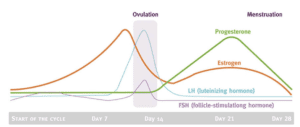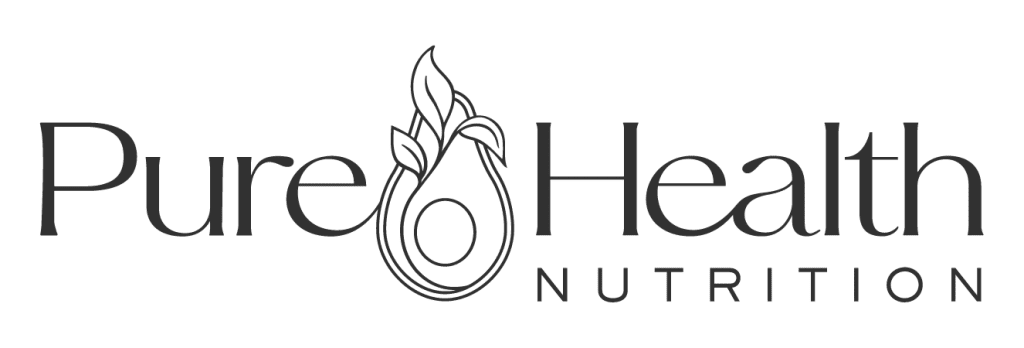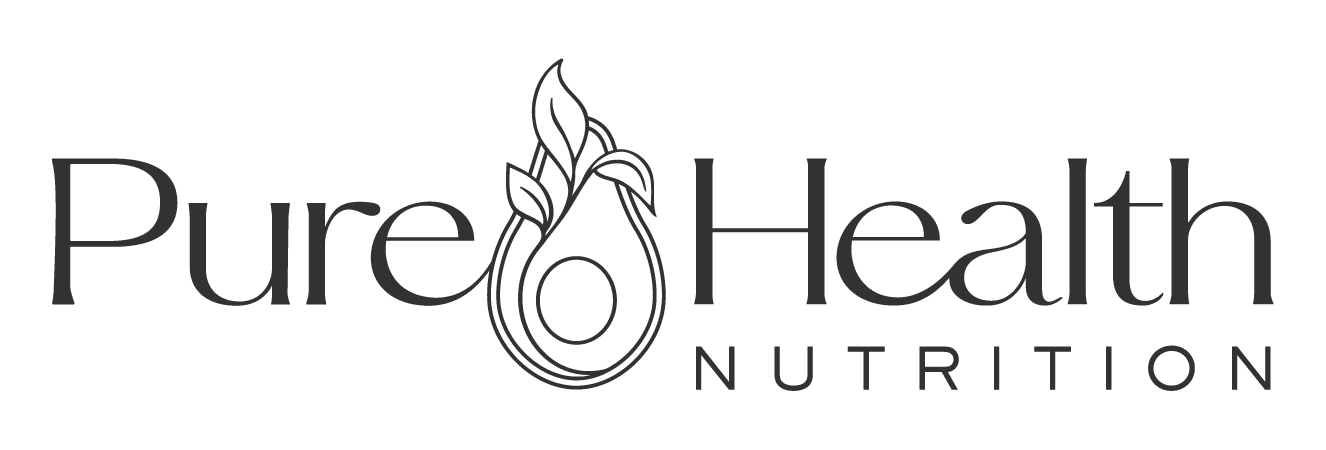The Markers of a ‘Regular’ Period
Understanding Female Hormones and Menstrual Health
As women, our menstrual cycle is a remarkable and intricate dance of hormones and physiological processes that not only govern menstruation but also reflect our overall well-being. At Pure Health Nutrition Clinic in Perth, our dedicated nutritionists are passionate about educating women on their menstrual health and empowering them to achieve hormonal balance. In this blog, we will delve into the markers of a ‘regular’ period, shedding light on the significance of understanding your menstrual cycle and its impact on your health.
The Harmony of Female Sex Hormones
Two primary female sex hormones, progesterone and oestrogen, play a central role in orchestrating the menstrual cycle. These hormones work in harmony, supporting various bodily functions through different life stages, including menstruation, pregnancy, menopause, and breastfeeding.
Key Roles of Progesterone
- Progesterone serves as a crucial hormone with multiple essential functions, such as:
- Reducing inflammation in the body.
- Supporting a healthy pregnancy and preparing the uterus lining for egg fertilisation
- Balancing out oestrogen levels.
- Supporting metabolism and weight balance.
- Promoting quality sleep and calming the nervous system.
- Maintaining brain function and cognition.
Vital Functions of Oestrogen
- Oestrogen, on the other hand, performs a range of critical functions, including:
- Supporting sexual and reproductive development.
- Regulating the growth of the uterine lining during the menstrual cycle
- Supporting cardiovascular health and stabilising blood pressure.
- Improving blood flow to the brain, which can enhance memory.
- Maintaining bone integrity and cholesterol metabolism.
Throughout the menstrual cycle, the levels of these hormones fluctuate to support different stages of reproductive health. Understanding these hormonal changes and their impact on your body is essential for identifying a ‘regular’ period.
Phases of a Healthy Menstrual Cycle
A healthy menstrual cycle typically consists of three main phases:
Follicular Phase
This phase lasts for about two weeks, during which follicle-stimulating hormone (FSH) is released from the pituitary gland, stimulating the maturation of follicles containing eggs within the ovaries. Oestrogen levels rise during this phase, supporting fertile mucus production, which aids fertility.
Ovulation
Occurring around the middle of the menstrual cycle (usually on day 14), ovulation is when a dominant egg is released from its follicle, signifying peak fertility.
Luteal Phase
After ovulation, the empty ovarian follicle transforms into the corpus luteum, which produces progesterone. During this phase, progesterone levels increase, preparing the uterus for a potential pregnancy. If implantation doesn’t occur, the endometrial lining sheds, resulting in menstruation.
A healthy menstrual cycle can last anywhere between 21 and 35 days, with an average of 28 days. Monitoring your menstrual cycle regularly can help identify any irregularities that may indicate underlying hormonal imbalances.

Indicators of a ‘Regular’ Period
A ‘regular’ period is marked by certain indicators that reflect overall menstrual health:
Manageable Pain: While experiencing some cramps and discomfort during menstruation is normal, severe pain that disrupts daily activities may signal an issue that requires attention.
Moderate Blood Loss: A healthy period involves blood loss of about 50 ml. If you find yourself changing pads or tampons more than once every two hours, it’s essential to seek professional advice.
- No Major PMS: While some PMS symptoms are common, more severe symptoms like mood swings, breast pain, fluid retention, headaches, and period pain should not be considered ‘normal.’
- Minimal Clotting: Blood loss is mostly liquid fluid with no large clots – Menstrual clots are normal but you shouldn’t have lots and they should be small, think the size of a 5-10c coin.
- Reddish-Brown Menstrual Fluid: The colour of your menstrual fluid can provide insight into your menstrual health, and it should typically be reddish-brown.
- Duration: A healthy period usually lasts between 2 and 7 days.
Understanding Each Menstrual Phase in Detail
Phase One- The Follicular Phase
During this phase, FSH stimulates the maturation of follicles within the ovaries. Oestrogen levels rise, leading to fertile mucus production, which can indicate peak fertility.
It takes 100 days for follicles to mature all the way to ovulation, which means that if follicles are unhealthy from any part of the maturation process (e.g., due to stress, nutrient deficiencies, inflammation present) this can result in period problems months later. This is why your health and nutrition are extremely important for period health.
Phase Two – The Ovulatory Phase
Around the middle of the cycle, a dominant egg is released during ovulation. This phase lasts for approximately 24 hours and marks the peak fertile time.
Phase Three- The Luteal Phase
After ovulation, the corpus luteum produces progesterone, which plays a crucial role in supporting pregnancy and maintaining overall well-being. PMS symptoms can be common during this phase and may indicate hormonal imbalances.
Understanding Hormonal Imbalances and Their Causes
Oestrogen Excess
High levels of oestrogen and/or insufficient progesterone in the luteal phase can lead to hormonal imbalances. Oestrogen metabolism occurs in the liver and involves specific nutrients like folate, vitamin B6, vitamin B12, zinc, selenium, and protein. Impaired liver detoxification and unhealthy gut bacteria can disrupt oestrogen metabolism, leading to oestrogen excess. Factors such as stress, inflammation, thyroid issues, insulin resistance, and nutrient deficiencies can further contribute to this imbalance.
Signs associated with oestrogen excess include:
- Heavy periods and blood clotting.
- Painful periods.
- Breast tenderness or sensitivity
- Fluid retention.
- difficulty losing weight.
- Hormonal headaches.
- Severe PMS symptoms.
Low Progesterone
Regular ovulation is essential for healthy progesterone production. Factors like stress, inflammation, thyroid disorders, and nutrient deficiencies (e.g., magnesium, B vitamins, vitamin D, iodine, zinc, and selenium) can influence progesterone production.
Symptoms of low progesterone may include:
- Low libido.
- Anxiety.
- Low mood or depression.
- Migraines.
- Acne.
To achieve hormonal balance and support a regular menstrual cycle, it is crucial to address the underlying causes of hormonal imbalances. Consulting with a qualified Perth nutritionist can help identify potential issues and develop personalised strategies to restore hormonal harmony.
Taking Control of Your Menstrual Health
At Pure Health Nutrition Clinic in Perth, we believe that understanding and taking control of your menstrual health is an essential step towards overall well-being. To optimise your menstrual cycle, consider the following steps:
- Monitor Your Cycle: Keep track of your menstrual cycle to identify any irregularities or patterns in your symptoms.
- Prioritise Nutrition: Focus on a nutrient-dense diet rich in whole foods, including vegetables, fruits, lean proteins, healthy fats, and whole grains. Adequate intake of essential nutrients supports hormonal balance and overall health.
- Manage Stress: Practise stress-reduction techniques such as meditation, mindfulness, yoga, or spending time in nature. Chronic stress can disrupt hormone levels and impact your menstrual health.
- Sleep Well: Aim for 7-9 hours of quality sleep each night to support hormone production and regulation.
- Stay Active: Engage in regular physical activity, which can help manage stress and improve hormonal balance. Incorporating low-moderate intensity exercises like yoga, pilates, and brisk walks can do wonders for our hormones. It’s important to be mindful of not over-exercising (e.g. HITT training sessions), as this can increase our cortisol levels and impact hormonal production.
- Seek Professional Guidance: If you experience severe PMS symptoms, irregular cycles, or menstrual pain, consult with a qualified Perth nutritionist or healthcare professional. They can conduct specific tests to identify potential hormonal imbalances and create a personalised plan to address them.
It’s important to book in with a qualified nutritionist if you’re experiencing these symptoms on a regular basis and further rule out underlying conditions such as PCOS, PMDD, Endometriosis or adenomyosis.
The Happy Hormones Program
At Pure Health Nutrition Clinic, we offer the Happy Hormones Program, providing individualised support to address hormonal imbalances. Our comprehensive approach involves blood pathology testing to assess nutrient status, thyroid health, inflammation, and hormone levels throughout your menstrual cycle. Functional testing, such as stool testing, helps identify gut health issues that may influence hormone metabolism.
Based on the results, we create tailored diet, lifestyle, and supplement recommendations to support your unique needs and health status. Our goal is to help you achieve hormonal balance and experience a healthy, regular menstrual cycle without disruptive symptoms.
Pure Health Nutrition Clinic is here to help.
Understanding the markers of a ‘regular’ period and the role of female sex hormones is crucial for every woman’s well-being. A healthy menstrual cycle reflects your overall health and provides valuable insights into your body’s functioning. By taking charge of your menstrual health and seeking professional guidance if needed, you can achieve hormonal balance and enjoy a more harmonious and enriching life.
At Pure Health Nutrition Clinic, our experienced Perth nutritionists are here to support and guide you on your journey to hormonal wellness. Don’t let hormonal imbalances hold you back from living your best life. Embrace your menstrual cycle as a monthly report card of your health and empower yourself with the knowledge and tools to achieve hormonal harmony. Together, we can create a healthier, happier you, reach out now for a 1:1 consultation.

